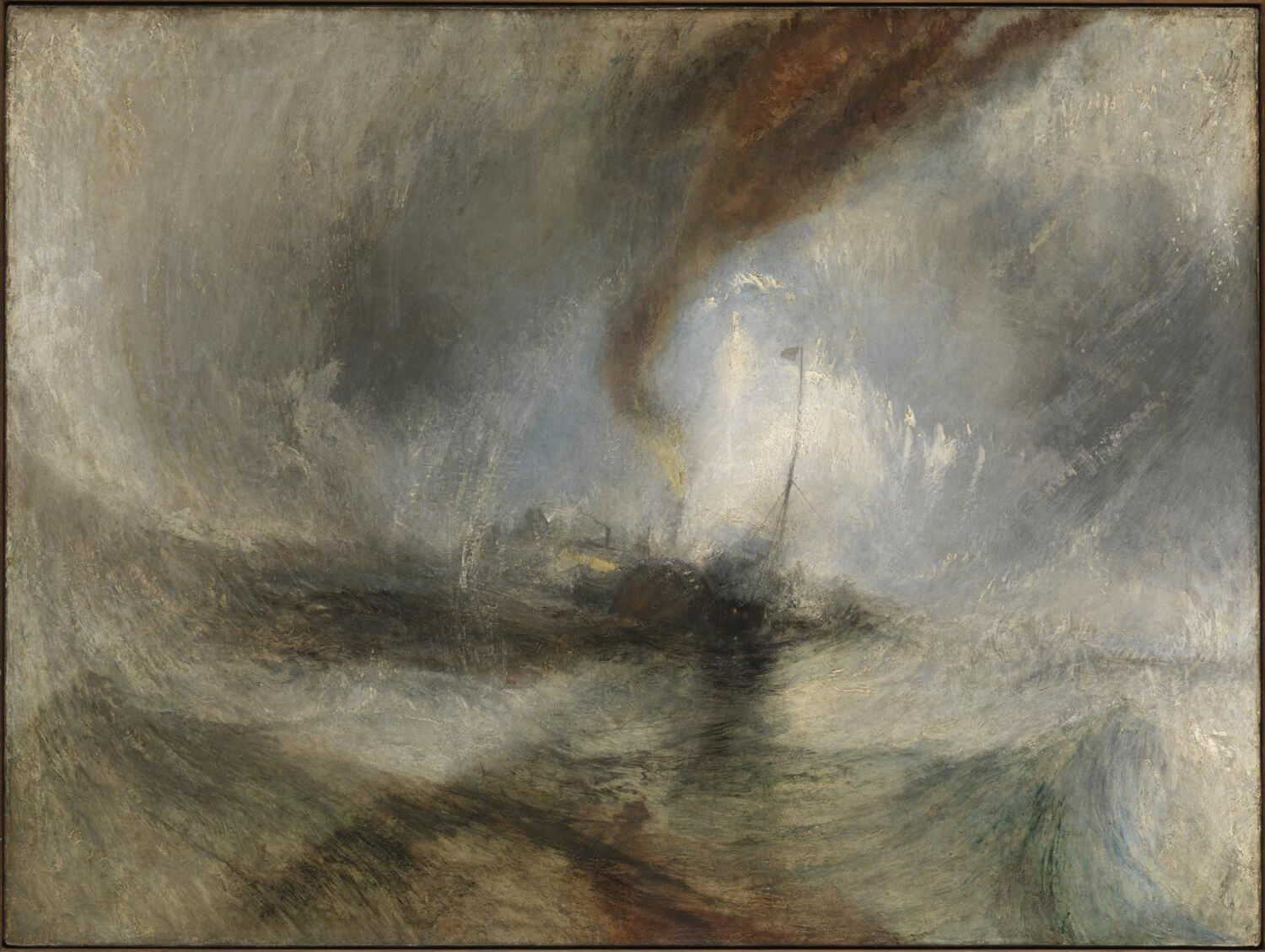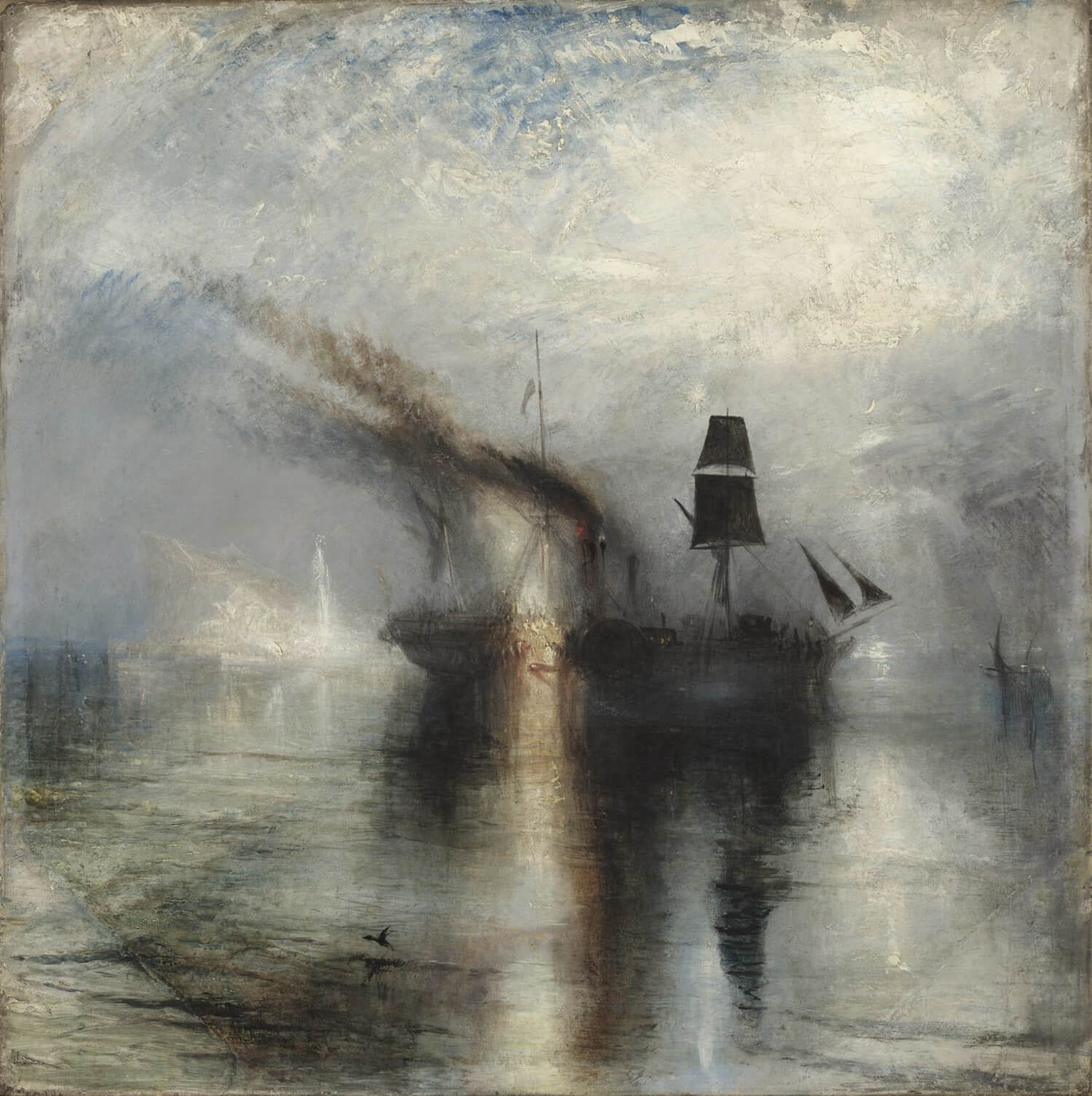FS Colour Series: Umbra Inspired by Turner’s Translucent Storms
Muted, elegant shades of grey and brown like UMBRA were transformed in the hands of Joseph Mallord William Turner into leaden skies and turbulent seas, capturing a raw and brutal side of nature capable of destroying anything in its midst. In Turner’s late paintings, we see the sublime awe and drama of sea storms coming to the fore, as great whirls of energised brushstrokes in mutable shades of brown and grey capture a world dissolved into translucent depth and space, and humble boats as immaterial as passing shadows. He wrote, “Art is not a copy of nature but a re-creation of it.”
Widely recognised today as “the painter of light”, Turner made a name for himself throughout the early-to-mid-19th century as primarily a landscape painter of great skill and dexterity, swiftly earning a stellar reputation. Following his training at the Royal Academy Schools in London, Turner painted detailed, topographical scenes which bore the influence of Dutch master Willem van der Velde and the Italianate scenes of Claude and Richard Wilson. From 1790 onwards Turner exhibited watercolour paintings in London’s Royal Academy, followed by oil paintings from 1796. He remained loyal to the Academy throughout his career, becoming an Associate in 1799, and full Academician in 1802.
From this point forward Turner travelled widely throughout Europe, making reams of atmospheric watercolour studies with loose, fluid washes of paint, and this period proved instrumental for Turner in developing his mature, expressive painting style. As the decades rolled on his painting style became bolder, freer, and more experimental. His subject matter varied from mythological stories to historical events or observed scenes, yet his trademark style remained the same – softly diffused, and shot through with theatrical passages of light.
In Peace – Burial at Sea, 1842, depicts a funereal ship setting out to sea as a sombre, yet ambient scene. The black ship’s smoky and indistinct outlines contrast with the crisp clarity of the sails, silhouetted against the darkening sky. All around it, light permeates from a searing, golden shard in the centre, rippling out into the soft, shimmering faun grey of the sky and water beyond. Painted in the same year, Snow Storm – Steam-Boat off a Harbour’s Mouth, 1842, takes us on a wild ride into a snowstorm at sea, where soft grey and brown waves are whipped up into a frenzy, swishing this way and that, and tossing the tiny steamboat in the centre into complete oblivion. The imagery for this work came from Turner’s daredevil adventure, in which he claims, he, “got the sailors to lash me to the mast to observe [the storm] for four hours.” While we may never know if this story is true, there’s no denying Turner’s aptitude in capturing the swelling drama of the storm.
Turner painted Shade and Darkness – the Evening of the Deluge, 1843 just a year later, and it echoes the same qualities of his other mature paintings, with daredevil, energised brushstrokes in muted shades of caramel, sienna and grey-brown. They are swept together into a theatrical arch of water circling around a halo of golden light, with a crystalline blue sky just visible in the distance. Turner deliberately plays with the contrast between cool and warm tonal contrasts in this painting, noting their ability to invoke differing emotional responses from the viewer. He thereby indulges our senses with an epic, swashbuckling adventure inspired by the Biblical Deluge, conveying the elemental and uncontrollable forces of nature at their most brutal, to which we are entirely at mercy, in what would become one of his most celebrated works of art.








































Leave a comment